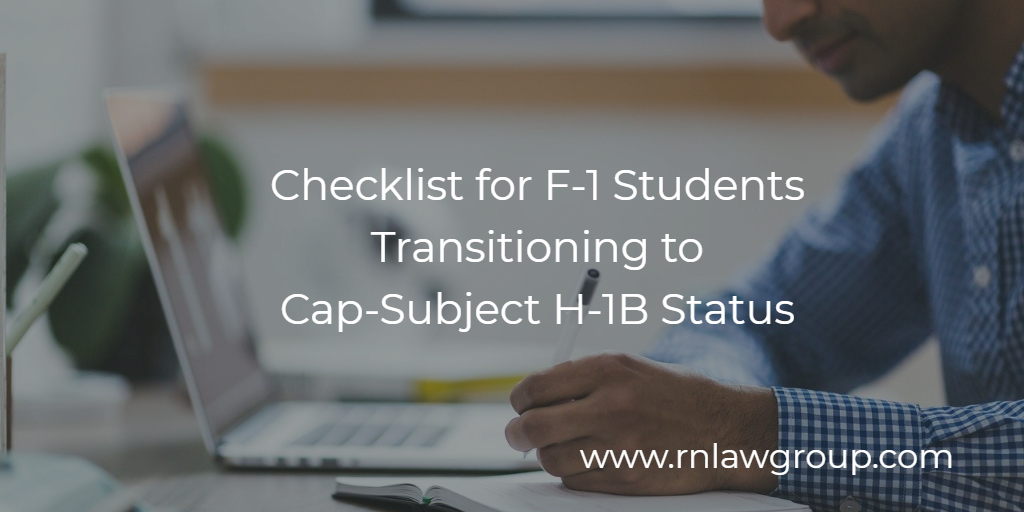
Checklist for F-1 Students Transitioning to Cap-Subject H-1B Status
Many of the foreign nationals who submit H-1B cap lottery registrations each year hold F-1 status. It is critical that those who are selected tie up all loose ends and maintain proper F-1 status to ensure a smooth transition to H-1B status. The following is a checklist for F-1 students transitioning to H-1B status:
1) Make sure your H-1B petition is filed while you are still on F-1 Optional Practical Training (OPT) if at all possible. The cap-gap extension may bridge a gap between the end of the F-1 student’s OPT and the start of their cap-subject H-1B employment on October 1. To be eligible, (1) the student must be in valid F-1 status at the time the cap-subject H-1B petition is filed, (2) the petition must be filed as a request for change of status rather than a request for consular processing, and (3) the petition must have an October 1 start date. It is the filing of Form I-129, not the electronic registration (i.e., lottery process), that confers the cap-gap extension. The filing of Form I-129 during the student’s OPT extends both F-1 status and work authorization until October 1, whereas filing during the F-1 grace period extends just the F-1 status (but not work authorization) until October 1.
2) Carefully consider any international travel during this transition. Traveling abroad while the H-1B petition is pending would cause the change of status request to be deemed abandoned by USCIS and, thereby, end the cap-gap extension. Apart from this, if there are other travel complications when the cap-gap extension was filed during the student’s F-1 grace period, the student would need a new F-1 visa to return.
3) Stay within the OPT unemployment limits. F-1 students fall out of status if they exceed a certain number of days of unemployment while on OPT; this unemployment time continues to accrue during the cap-gap extension if the H-1B petition was filed while the student was on OPT. If the student is extending the 12-month-standard, post-completion OPT via the cap-gap extension, the 90-day unemployment limit continues to apply. If the student is extending STEM OPT via the cap-gap extension, the 150-day combined unemployment limit applies. The student must timely comply with all reporting obligations and make sure the Designated School Official (DSO) receives all updates within the required reporting timeframe.
4) Coordinate with the DSO if you want an updated Form I-20, indicating the cap-gap extension. Sometimes, students will need an updated Form I-20 for employment, driver’s license renewal, or other purposes. The cap-gap extension is automatic for those students who qualify, and SEVIS should automatically update as it receives data about the H-1B petition. If the SEVIS record does not update automatically, the DSO can request a data fix.
5) If you are on STEM OPT, remember to complete both of your self-evaluations in a timely fashion. The employer must also sign, and both evaluations must be provided to the DSO no later than 10 days following their respective reporting deadlines (i.e., within 12 months of the approved STEM OPT start date and at the conclusion of the 24-month STEM OPT period).
If you have questions regarding the transition from F-1 to H-1B status, contact a Reddy Neumann Brown PC attorney.
